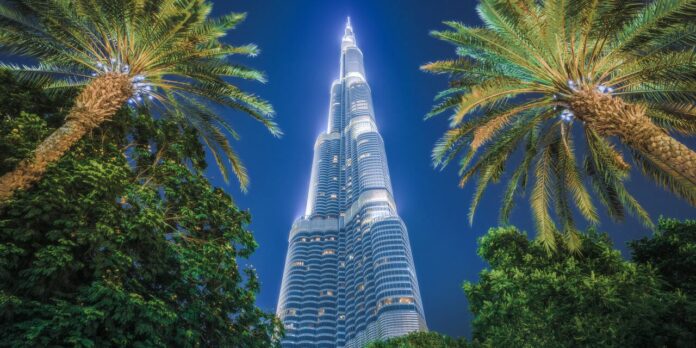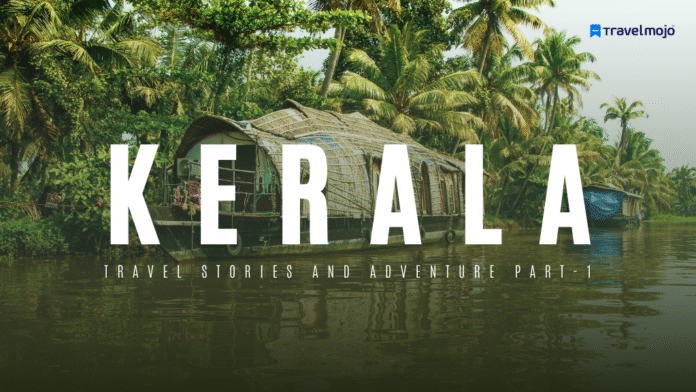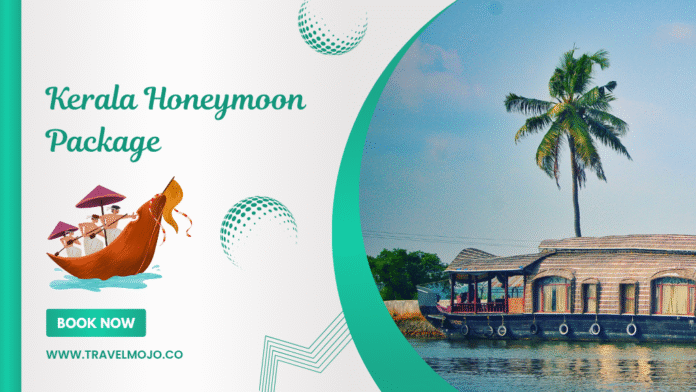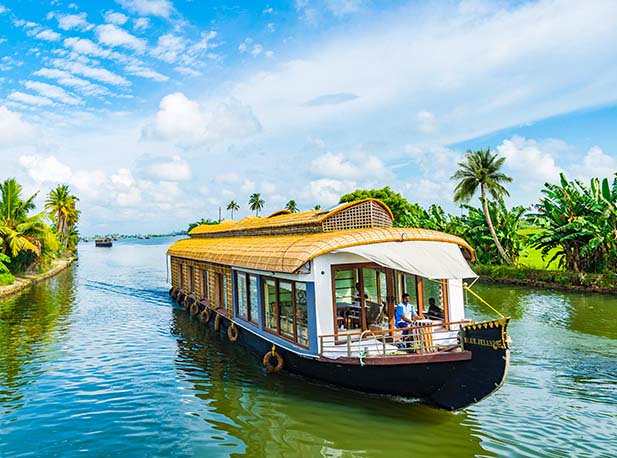If you’ve ever dreamed of escaping into nature’s soothing embrace, there’s nothing quite like the magic of waterfalls. South India, with its lush hills, dense forests, and winding rivers, is blessed with some of the most breathtaking waterfalls in the country. Whether it’s the thundering roar of Jog Falls or the serene beauty of Athirappilly, each waterfall here has a story to tell and a scene to mesmerize.
10 Best Waterfalls in South India
Let’s explore the 10 best waterfalls in South India — from the highest peaks to the widest cascades.
1. Jog Falls, Karnataka – The Majestic Marvel
When it comes to the biggest waterfall in South India, Jog Falls tops the list. Located in the Shimoga district of Karnataka, this natural wonder is formed by the Sharavathi River plunging from a height of about 830 feet (253 meters). It’s one of the highest waterfalls in South India and among the most popular in India.
During the monsoon season, Jog Falls transforms into a mighty wall of water, surrounded by misty hills and dense greenery. You can view it from the top or trek down the rocky path to the base for a close-up experience. The sound of the roaring falls and the cool spray on your face create a truly unforgettable moment.
Best time to visit: July to October
Don’t miss: The light-and-sound show and the viewpoint from Watkins Platform.
2. Athirappilly Falls, Kerala – The Niagara of India
Famously called the “Niagara of India,” Athirappilly Falls is one of the most beautiful and largest waterfalls in South India. Located in the Thrissur district of Kerala, this 80-foot cascade along the Chalakudy River is a favorite among filmmakers and travelers alike.
Surrounded by Sholayar forests, it’s not just about the waterfall – it’s the entire ecosystem around it. The falls are home to rare bird species, including the Great Hornbill, making it a paradise for nature lovers and photographers. The sound of rushing water combined with the cool breeze and the greenery around will calm any restless heart.
Best time to visit: June to September
Fun fact: Several famous Indian movies like Raavan and Baahubali were shot here!
3. Hogenakkal Falls, Tamil Nadu – The Smoky Cascade
Hogenakkal, which literally means “smoking rocks,” is a must-visit among the best waterfalls in South India. Located on the Kaveri River, this waterfall gets its name from the smoky mist that forms when the water crashes onto the rocks below.
Hogenakkal is not just about scenic beauty – it’s also about adventure and culture. You can take a coracle boat ride near the base of the falls, a thrilling experience that brings you close to the roaring waters. The area is also known for local fish delicacies and traditional massages by the riverside, making it a perfect weekend getaway.
Best time to visit: August to October
Don’t miss: The coracle boat ride and local fried fish.
4. Dudhsagar Falls, Goa-Karnataka Border – The Sea of Milk
Dudhsagar Falls, meaning “Sea of Milk,” is one of India’s most iconic waterfalls and often considered the largest waterfall in South India. Gushing down from a height of 1,017 feet, it looks like a river of milk tumbling down the lush green mountains.
Located inside the Bhagwan Mahaveer Sanctuary, this four-tiered waterfall becomes a stunning sight during monsoon when the Mandovi River is in full force. The view of a train passing across the bridge in front of the falls is pure cinematic magic.
Best time to visit: June to September
Pro tip: Reach via jeep safari from Castle Rock or hike through the railway tracks for a thrilling adventure.
5. Meenmutty Falls, Kerala – The Hidden Gem of Wayanad
Tucked away in the dense forests of Wayanad, Meenmutty Falls is one of the most stunning yet lesser-known waterfalls in South India. With a drop of nearly 1,000 feet across three tiers, it’s among the highest waterfalls in South India.
To reach Meenmutty, visitors must trek through thick jungle trails, making the journey as exciting as the destination itself. The sound of birds, rustling leaves, and finally the sight of water cascading down rocks makes it a truly rewarding experience.
Best time to visit: Post-monsoon months (October to February)
Don’t miss: The nearby Banasura Sagar Dam and Soochipara Falls.
6. Talakona Falls, Andhra Pradesh – The Spiritual Stream
Located inside the Sri Venkateswara National Park, Talakona Falls is not only scenic but also spiritual. With a drop of about 270 feet, it’s the tallest waterfall in Andhra Pradesh and one of the best waterfalls in South India to visit for peace and rejuvenation.
Surrounded by dense forest and medicinal herbs, the water of Talakona is believed to have healing properties. Visitors can take short treks, enjoy birdwatching, and visit nearby temples that add to the spiritual charm of the place.
Best time to visit: September to January
Travel tip: Stay overnight at eco-cottages nearby for a serene forest experience.
7. Sirimane Falls, Karnataka – The Serene Beauty of Sringeri
If you love smaller yet scenic waterfalls that aren’t crowded, Sirimane Falls in Karnataka is your spot. Located near Sringeri, this waterfall flows gracefully through forested hills, offering a quiet retreat.
It might not be the biggest waterfall in South India, but its beauty lies in its simplicity. Families often visit here for a refreshing dip or to enjoy a picnic surrounded by chirping birds and lush greenery.
Best time to visit: Throughout the year, especially after monsoon.
Don’t miss: A visit to Sringeri Mutt and the coffee plantations nearby.
8. Iruppu Falls, Karnataka – The Holy Cascade
Situated in the Brahmagiri Range of the Western Ghats, Iruppu Falls holds both natural and mythological significance. Flowing from the Lakshmana Tirtha River, it’s believed that Lord Rama’s brother, Lakshmana, shot an arrow here to bring water for his brother during their exile.
Besides being among the best waterfalls in South India, it’s also a popular pilgrimage site, especially during Shivaratri. The water gushes down multiple levels, creating a soothing melody that blends beautifully with the sounds of the forest.
Best time to visit: August to December
Tip: Visit early morning for peaceful views and fewer crowds.
9. Thommankuthu Falls, Kerala – The Seven-Step Wonder
Located near Thodupuzha, Thommankuthu Falls is a seven-step waterfall that attracts trekkers and nature lovers alike. Each level of the cascade has small pools where visitors can relax, making it a perfect spot for families and adventure seekers.
Though it’s not the largest waterfall in South India, its unique multi-tiered beauty and tranquil surroundings make it a gem worth discovering.
Best time to visit: June to October
Don’t miss: Trekking trails around the forest for stunning viewpoints.
10. Courtallam Falls, Tamil Nadu – The Spa of South India
Known as the “Spa of South India,” Courtallam Falls in Tamil Nadu is famous for its natural healing properties. The water here flows through medicinal forests before cascading down, making it rich in minerals.
It’s one of the most accessible and family-friendly waterfalls in South India, with separate bathing areas and easy access roads. There are nine waterfalls in total around Courtallam, each offering its own charm and beauty.
Best time to visit: June to September
Don’t miss: The main falls at Courtallam and nearby smaller cascades like Five Falls and Old Courtallam.
Frequently Asked Questions
Which is the biggest waterfall in South India?
The biggest waterfall in South India is Jog Falls in Karnataka. It drops from a height of around 830 feet (253 meters), making it one of the most spectacular and powerful waterfalls in India, especially during the monsoon season.
What is the highest waterfall in South India?
Meenmutty Falls in Wayanad, Kerala, is considered one of the highest waterfalls in South India, with a total height of about 1,000 feet. It cascades in three tiers and is surrounded by lush forests, making it a paradise for trekkers and nature lovers.
Which is the largest waterfall in South India by volume?
Athirappilly Falls in Kerala is often regarded as the largest waterfall in South India in terms of water flow and width. Known as the “Niagara of India,” it’s especially magnificent during the monsoon when the Chalakudy River is in full flow.
What are the top 5 best waterfalls in South India?
The top 5 best waterfalls in South India are:
1. Jog Falls – Karnataka
2. Athirappilly Falls – Kerala
3. Hogenakkal Falls – Tamil Nadu
4. Dudhsagar Falls – Goa-Karnataka border
5. Meenmutty Falls – Kerala
Each offers a unique blend of scenic beauty, adventure, and tranquility.
When is the best time to visit waterfalls in South India?
The ideal time to visit most waterfalls in South India is between June and October, during or right after the monsoon season. During this time, the rivers are full, and the waterfalls are at their most magnificent.
Are these waterfalls safe for swimming or bathing?
Some waterfalls, like Courtallam Falls and Sirimane Falls, are relatively safe for swimming in designated areas. However, always check local safety guidelines and avoid swimming near steep drops or during heavy rains for safety reasons.
Which waterfall in South India is best for photography?
Dudhsagar Falls and Athirappilly Falls are favorites among photographers due to their cinematic backdrops. The sight of the train passing near Dudhsagar or the misty surroundings of Athirappilly make for perfect photo opportunities.
Can I visit multiple waterfalls in one trip?
Yes! Many travelers plan waterfall trails — for example, exploring Athirappilly, Vazhachal, and Meenmutty in Kerala, or combining Jog Falls and Sirimane Falls in Karnataka. Each state in South India offers several beautiful waterfalls within short driving distances.
Are there trekking options near these waterfalls?
Waterfall treks are popular in South India. For instance, Meenmutty Falls and Thommankuthu Falls in Kerala offer exciting forest trails, while Talakona Falls in Andhra Pradesh provides a scenic and spiritual trekking route.
Why are South Indian waterfalls so famous?
South Indian waterfalls are famous for their lush greenery, monsoon-fed rivers, and unique geological formations. They combine natural beauty with cultural significance, making them perfect for both adventure and relaxation.





